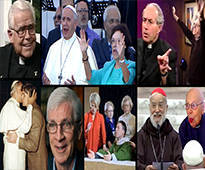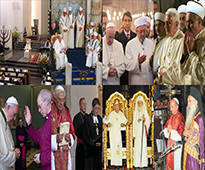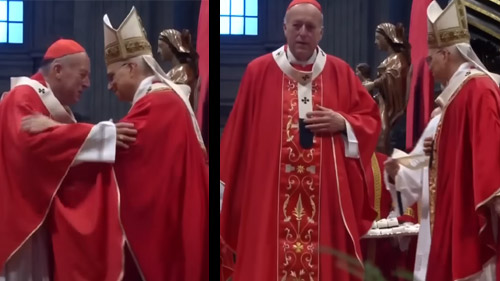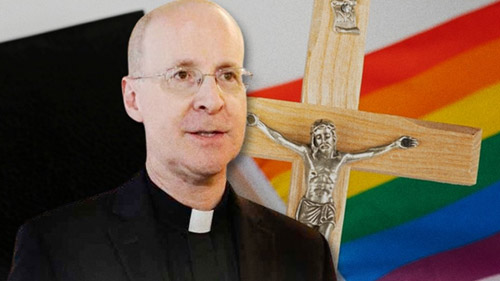| Recent Featured Videos and Articles | Eastern “Orthodoxy” Refuted | How To Avoid Sin | The Antichrist Identified! | What Fake Christians Get Wrong About Ephesians | Why So Many Can't Believe | “Magicians” Prove A Spiritual World Exists | Amazing Evidence For God | News Links |
| Vatican II “Catholic” Church Exposed | Steps To Convert | Outside The Church There Is No Salvation | E-Exchanges | The Holy Rosary | Padre Pio | Traditional Catholic Issues And Groups | Help Save Souls: Donate |  |









 " />
" /> " />
" /> " />
" /> " />
" /> " />
" />




The important ramifications of Vatican II’s theological note – refuting the SSPX and others
We’ve repeatedly pointed out that Antipope Paul VI made the heretical teaching of Vatican II binding by his solemn confirmation of each of its documents – a fact which proves that he was not, and could not have been, a true pope.
EACH ONE OF THE 16 DOCUMENTS OF V-2 ENDS WITH THESE WORDS (OR WORDS BASICALLY IDENTICAL TO THESE):
However, those who want to be able to reject Vatican II (or portions of it) while accepting Paul VI as a valid pope – a rather large group of “traditionalists” – will frequently make reference to a theological note that was attached to the Vatican II document Lumen Gentium. They think this clarification proves that Paul VI didn’t promulgate Vatican II infallibly or authoritatively. The SSPX’s official website attempts to use this note attached to Lumen Gentium as an argument to prove their point, but the fact is that not only does this argument not hold up under scrutiny, but the note proves just the opposite.
Here is the crucial portion of the theological note that was attached to the Vatican II document Lumen Gentium:
First, this note is not even part of the actual text of the document Lumen Gentium; it’s an appendix to the text of Lumen Gentium. (Walter M. Abbott, The Documents of Vatican II, p. 97.)
Second, this note is attached only to Lumen Gentium, not the rest of the documents. In other words, even if this theological note did “save” Paul VI’s promulgation of the heresies in Lumen Gentium (which it didn’t), it still did not “save” his promulgation of the rest of the Vatican II heresies.
Third, if one reads the above note one can see that it declares that the subject matter, or the way something is said within Vatican II, identifies that Vatican II is enacting the supreme Magisterium of the Church, in accordance with the rules of theological interpretation – that is to say, as the Church in the past has enacted the supreme Magisterium. Paul VI’s declaration at the end of every Vatican II document (quoted above) definitely indicates, by “the way it is said,” “in accordance with the rules of theological interpretation” (that is, paralleling past dogmatic decrees), that he is enacting the supreme Magisterium (if he had been a pope). Therefore, this theological clarification attached to the document Lumen Gentium does not diminish or negate the solemn language of Paul VI found at the end of every Vatican II document. Rather, his language at the end of every Vatican II document fulfills the requirements of the theological note.
Fourth, and most importantly, those defenders of Paul VI who attempt to use this note in order to “save” all of the documents of Vatican II from compromising Papal infallibility don’t pay much attention to what it actually said. The note clearly stated that “the other matters which the synod (Vatican II) puts forward as the teaching of the supreme Magisterium of the Church, each and every member of the faithful should accept and embrace according to the mind of the synod itself, which is clear either from the subject matter or the way it is said, in accordance with the rules of theological interpretation.”
This is a very important point! There are numerous instances in Vatican II where Vatican II is setting forth what it believes to be the teaching of the supreme Magisterium, which “each and every member of the faithful should accept and embrace according to the mind of the synod itself, which is clear either from the subject matter or the way it is said…” For instance, in its heretical Declaration on Religious Liberty (Dignitatis Humanae), Vatican II says this:
Vatican II document, Dignitatis Humanae (#9): “The statements made by this Vatican synod on the right to religious freedom have their basis in the dignity of the person, the demands of which have come to be more fully known to human reason from the experience of centuries. But this teaching on freedom also has its roots in divine revelation, and is for that reason to be held all the more sacred by Christians.”
Here Vatican II explicitly indicates that its heretical teaching of religious liberty is rooted in divine revelation and is to be held sacred by Christians. This clearly fulfills the requirements of the theological note for a teaching that “each and every member of the faithful should accept and embrace according to the mind of the (Vatican II) synod itself, which is clear either from the subject matter or the way it is said…” And there is more:
Notice, Vatican II explicitly indicates that its heretical teaching on religious liberty is: 1) faithful to the truth of the Gospel; 2) follows the way of Christ and the apostles; and 3) is in accord with the revelation of God! We remind the reader again of the wording of the theological note, which stated that “the other matters which the (Vatican II) synod puts forward as the teaching of the supreme Magisterium of the Church, each and every member of the faithful should accept and embrace according to the mind of the synod itself, which is clear either from the subject matter or the way it is said, in accordance with the rules of theological interpretation.”
Therefore, according to the theological note itself, those who accept Paul VI as a pope are bound to accept Vatican II’s heretical teaching on religious liberty as the teaching of the supreme Magisterium of the Church! The theological note binds them to accept Vatican II’s heretical teaching on religious liberty as: 1) faithful to the truth of the Gospel; 2) following the way of Christ and the apostles; and 3) in accord with the revelation of God because this is “the mind of the synod itself (Vatican II), which is clear from the subject matter or the way it is said…” It’s very simple: those who believe that Antipope Paul VI was the pope are bound to the heretical document on religious liberty.
To summarize all of the points made so far: 1) the theological note attached to Lumen Gentium was not appended to every document; 2) the theological note attached to Lumen Gentium does not diminish or negate the solemn language of Paul VI at the end of every Vatican II document; 3) even if the theological note did apply to every document and somehow did make Paul VI’s solemn language at the end of each document non-binding (which it most certainly doesn’t), the theological note by itself still proves that various teachings in Vatican II – such as its heretical teaching on religious liberty - are infallible and binding because of the way that Vatican II presents its teaching on these matters. Thus, no matter which way one tries to escape the reality that Antipope Paul VI could not have been a true pope and at the same time promulgate Vatican II, he fails. For more on this issue, see our article: Was Vatican II infallible?
Sign up for our free e-mail list to see future vaticancatholic.com videos and articles.
Recent Content
^